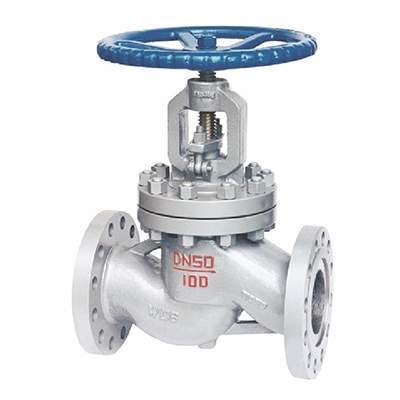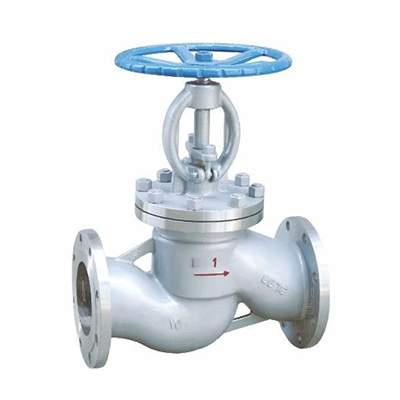Welcome to My Blog!
Before we dive into the content, if you’re interested in our products or have any questions, please feel free to visit our Contact Us page on the website. Our team is ready to assist you with inquiries, orders, or any support you may need.
Now, let’s get started on our journey together. I hope you find the content here insightful, engaging, and valuable.
A stop valve is a crucial component in fluid control systems, often used to regulate or stop the flow of fluids in pipes, tanks, and other infrastructure. Whether you are in plumbing, industrial processes, or water treatment, understanding how stop valves work, how to install them properly, and how to maintain them is essential. In this guide, we will walk you through the types of stop valves, how they work, installation steps, maintenance tips, and common issues you might encounter.
What is a Stop Valve?

Definition and Function of a Stop Valve
A stop valve is a type of valve that allows users to control the flow of liquid, gas, or steam within a pipeline. It can either completely stop or partially regulate the flow, ensuring that fluids are distributed safely and efficiently. The most common types of stop valves include gate valves, globe valves, ball valves, and check valves, each with its own specific functionality and application.
Common Applications of Stop Valves
Stop valves are widely used in various industries, including:
- Water Treatment: Regulating water flow in pipelines, ensuring efficient filtration and distribution.
- Oil & Gas: Controlling flow in pipelines to maintain pressure and flow rate.
- HVAC Systems: Ensuring proper regulation of fluids in heating, ventilation, and air conditioning systems.
How Stop Valves Differ from Other Valves
While similar to shut-off valves, stop valves offer more precise control over fluid flow. Shut-off valves are typically used to cut off the flow completely, whereas stop valves can allow for more nuanced adjustments.
Types of Stop Valves
Ball Stop Valves
Ball stop valves use a rotating ball to control the flow of liquid. The ball has a hole through its center that aligns with the pipe to allow flow and can be rotated to block the flow when needed. Ball stop valves are typically used in systems that require easy on/off control and are known for their reliability and speed of operation.
- Advantages: Quick operation, tight seal, minimal pressure drop.
- Ideal Applications: Residential plumbing, gas lines, and industrial applications.
Gate Stop Valves
Gate valves use a sliding gate to regulate the flow. When the valve is opened, the gate moves vertically, allowing the fluid to pass through. These valves are ideal for fully opening or closing fluid flow, making them perfect for systems where flow regulation is less critical.
- Advantages: Suitable for high-volume flow, low-maintenance.
- Ideal Applications: Water supply, industrial pipelines.
Globe Stop Valves
Globe stop valves are designed for precise flow control. Their internal construction allows them to provide fine adjustments, making them ideal for applications that require consistent flow rates.
- Advantages: Excellent control over flow, durable, used for throttling applications.
- Ideal Applications: Chemical plants, water treatment facilities.
Check Valves vs. Stop Valves
Check valves prevent backflow in systems, ensuring that fluid only flows in one direction. Unlike stop valves, which regulate or stop flow, check valves are used as a safety measure in systems to prevent reverse flow and potential contamination.
How Does a Stop Valve Work?

Basic Mechanism Behind Stop Valves
Stop valves operate by either blocking or allowing fluid to pass through based on their internal design. This can involve a rotating mechanism, such as in ball valves, or a sliding mechanism, as seen in gate valves. When the valve is turned or adjusted, it either allows fluid to flow or stops it completely.
Manual vs. Automated Stop Valves
While manual stop valves require a user to physically turn the valve to adjust the flow, automated stop valves use sensors and actuators to control the flow based on preset parameters. Automated systems are particularly useful in complex industrial applications where precision is critical.
Flow Control Mechanism in Stop Valves
Stop valves are equipped with a mechanism that either regulates the flow of fluid or completely blocks it. For instance, in a globe valve, the flow rate can be adjusted by altering the position of the internal stem, while a ball valve uses the rotation of the ball to open or close the flow path.
How to Choose the Right Stop Valve for Your System
Factors to Consider (Material, Size, Pressure Rating)
When choosing a stop valve, it’s essential to consider factors like the material (brass, stainless steel, cast iron, etc.), the size of the pipe, and the pressure rating. Choosing a valve with the right material ensures durability, while the correct size and pressure rating ensure the valve can handle the expected flow and pressure without failure.
Choosing the Right Valve Based on Application (Water, Gas, Oil)
Different fluids require different types of valves. For water systems, corrosion-resistant materials like stainless steel or bronze are ideal. For gas systems, it’s crucial to use valves that can seal tightly and handle high pressure, such as ball or gate valves.
Pressure and Temperature Considerations
The pressure and temperature conditions of the system will also determine the type of valve you should use. Make sure the valve is rated for the pressure and temperature conditions it will face in operation.
Stop Valve Installation Guide
Step-by-Step Installation Process
- Turn off the System: Ensure that the system is depressurized and the flow of liquid or gas is stopped before installing the valve.
- Prepare the Pipe: Cut the pipe where the valve will be installed, ensuring that the ends are clean and smooth.
- Install the Valve: Secure the stop valve in place using appropriate fittings.
- Tighten and Test: Tighten the valve securely and test the system for leaks before putting it back into operation.
Tools and Equipment Needed for Installation
Basic tools required for valve installation include pipe cutters, wrenches, sealing materials, and Teflon tape for thread sealing.
Common Mistakes to Avoid During Installation
Avoid improper valve sizing, inadequate sealing, or over-tightening, which can damage the valve or lead to leaks.
Testing the Valve Post-Installation
Once installed, perform a pressure test to ensure there are no leaks and that the valve functions as expected.
Stop Valve Maintenance and Troubleshooting
Regular Maintenance Tips for Stop Valves
- Check for leaks and clean the valve periodically to ensure smooth operation.
- Lubricate the valve stem and handle to prevent wear and ensure ease of operation.
How to Prevent Common Problems (Leaks, Sticking Valves)
Regularly inspect the valve for corrosion or dirt buildup. Ensure that the valve is exercised periodically to prevent sticking.
Troubleshooting a Malfunctioning Stop Valve
Common issues include leaks, failure to open or close properly, or unusual noise during operation. In most cases, these can be fixed by replacing the seals or repairing the internal mechanism.
How to Repair a Leaking Stop Valve
A leaking valve may require replacing the valve stem seal or O-rings. For severe damage, replacing the entire valve may be necessary.
Stop Valves in Different Industries
Stop Valves in Plumbing Systems
In plumbing, stop valves are used to regulate water flow to fixtures and appliances. They are essential for water supply control and to isolate parts of the system for repairs.
Stop Valves for Industrial Applications (Oil, Gas, Water Treatment)
Stop valves in industrial settings help control flow in pipelines that carry oil, gas, or water. These valves are crucial for maintaining pressure and ensuring that the system operates efficiently.
Stop Valves in Fire Protection Systems
In fire protection systems, stop valves are used to control water flow to fire sprinklers or hydrants, ensuring the system is ready to activate in an emergency.
Stop Valves in HVAC and Cooling Systems
Stop valves regulate the flow of heating and cooling fluids in HVAC systems, helping maintain optimal temperature control in buildings and industrial facilities.
Common Issues with Stop Valves and How to Fix Them
Leaking Stop Valve: Causes and Solutions
A leaking valve is often caused by worn-out seals or O-rings. Replacing the damaged parts can usually solve the problem.
Stop Valve Not Closing Properly: What to Do
If a valve isn’t closing properly, it could be due to debris or damage to the valve seat. Cleaning or replacing the valve seat often resolves this issue.
Why Is My Stop Valve Making Noise?
Noise in a stop valve is often caused by excessive water flow or trapped air. Adjusting the flow or bleeding the air out of the system may help.
Advantages of Using Stop Valves in Your System

Flow Control and System Safety
Stop valves provide reliable control over fluid flow, enhancing system safety and efficiency.
Easy to Install and Maintain
With straightforward installation and maintenance requirements, stop valves are a cost-effective solution for regulating fluid flow.
Durable Materials and Long-Term Performance
Stop valves are made from durable materials that ensure long-term performance even in harsh environments.
Conclusion
Stop valves are essential for controlling fluid flow in a wide range of applications, from plumbing systems to industrial processes. Understanding their types, installation, maintenance, and troubleshooting is crucial for maximizing efficiency and safety. Stop valves are vital for regulating and stopping fluid flow, enhancing system performance and minimizing the risk of damage due to pressure fluctuations or leaks.
FAQ
What is a stop valve used for?
A stop valve is used to control or stop the flow of liquid, gas, or steam in a pipeline. It is commonly found in plumbing systems, industrial applications, and water treatment plants to regulate or shut off the flow when needed.
How do you install a stop valve?
To install a stop valve, first ensure the system is depressurized. Then, cut the pipe where the valve will be placed, install the valve using proper fittings, tighten it securely, and test for leaks before reactivating the system.
What’s the difference between a stop valve and a gate valve?
A stop valve allows for more precise control over fluid flow, while a gate valve is used primarily to fully open or shut off the flow. Stop valves are ideal for systems that require adjustable flow, while gate valves are best for on/off applications.
Can I use a stop valve for gas lines?
Yes, stop valves are commonly used in gas lines. However, it’s important to choose a valve specifically designed for gas systems to ensure a tight seal and prevent leaks under high pressure.
Why is my stop valve leaking?
A leaking stop valve is often caused by worn-out seals, faulty O-rings, or incorrect installation. Replacing damaged parts or reseating the valve should resolve the issue. If the valve is severely damaged, it may need to be replaced.
Looking for the Right Stop Valve for Your System?
If you’re ready to enhance your system’s efficiency with a high-quality stop valve, or need expert advice on installation and maintenance, contact us today! Our team of professionals is here to help you choose the best valve for your specific needs and ensure seamless operation for years to come.
Get in touch now to get started!
